Different types of pipes are used in the construction industry for plumbing and sanitary purposes. These are used in building construction works for varied purposes like water supply management, drainage, and waste disposal. These are available in different types of materials for various conditions and situation demands.
Building structure for every building requires a sufficient quantity of water and should be readily available at locations of serviceability according to occupant’s needs. Supply demands must be calculated for a building and transmission of water through pipes in the structure as well as below the structure must be computed for drainage and waste management.
Different typologies of pipes are used for different purposes of supply and drainage systems.
- Service supply pipes
- Drain pipes or disposal management pipes
Supply Pipes (Inlet Pipes)
The distributing network of pipes that supply water to the plumbing system of the building is known as supply or service pipes. Further classifications of pipes are listed according to the material they are made of:
- Copper pipes
- Galvanised Iron pipes
- PVC Pipes
- CPVC Pipes
- PEX pipes
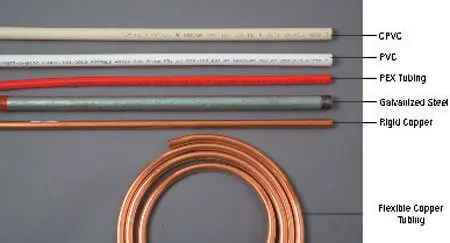
1. Copper Pipes
Copper pipes are an ideal solution to water supply where other metals are corroded.
They have high resistance to corrosion with considerable strength and better ductility.
They can bear high pressures for heavy flows in industries too.
Copper pipes are available in two variables, namely: HIGH GAUGE and LIGHT GAUGE.
Heavy gauge pipes are used where inline pressures are high and are from distribution mains. Light gauge pipes are used for internal distribution for domestic purposes
Copper pipes are quite costly (than any other products mentioned in the list). So in India, we don’t prefer using copper pipes for supply lines.

2. Galvanized Iron Pipes
Iron Pipes are treated with zinc coating to prevent corrosion, and this resultant is known as Galvanised Iron Pipes. The grade of G.I. pipes is distinguished from the level of thickness.
G.I. Pipes can be used for the internal plumbing network of water supply.
G.I. Pipes are expensive than PVC pipes. G.I. pipes were used in Olden days in house piping work but due to the lower cost and better properties, PVC pipes have replaced GI pipes almost completely.
One big advantages for G.I. line is that they can be used for both hot and cold water lines.
But rectifying any damage for a G.I. line is very difficult once installed.
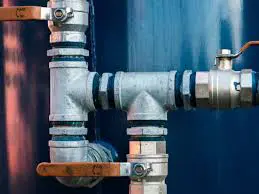
3. PVC Pipes
Plastic pipes are majorly used for cold water service networks. These pipes are high in demand because they are cheap in cost. Plastic pipes are corrosion resistant and light in weight. These are easy to install and do not require threading application.
PVC pipes as mentioned before cost less than G.I. Pipes and thus has found a huge application in plumbing work for building construction work.
PVC pipes cannot be used in hot water application. PVC pipe can handle max operating temperatures of up to about 140 degrees Fahrenheit (60 deg centigrade).

4. CPVC Pipes (Chlorinated Polyvinyl Chloride)
CPVC pipes and PVC pipes although look similar from outside, their chemical / molecular structure is different. Chlorine is added in the manufacturing process of CPVC.
CPVC and PVC pipes are both strong and rigid forms of pipe, and they can be found in the same pipe and fitting sizes.
The only difference is CPVC pipes can handle max operating temperatures of up to about 200 degrees Fahrenheit (93.33 deg centigrade)
CPVC pipes are usually recommended for hot water lines like solar water line or geyser lines.
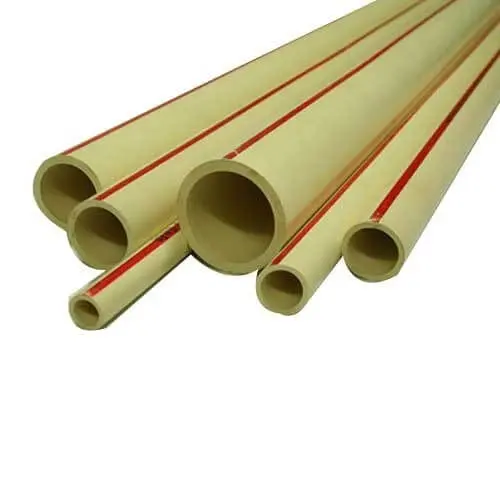
5. PEX Piping

Drain Pipes or Disposal Management Pipes
Residential accommodation may produce wastewater from sources like kitchen, bathroom, toilets, etc. An interconnected network of pipes is used to dispose of wastewater. Different types of Wastewater pipes are used for different functions like:
- Soil waste management pipes
- Wastewater pipe
- Rainwater pipe
- Ventilation pipes
Types of Waste Disposal Pipes (based on Material Composition)
Waste disposal pipes are available in different materials and differ in properties according to the manufacturing. Pipes used in the drainage system are as follows:
- Cast iron pipes
- Concrete pipes
- PVC pipes
- Asbestos cement pipes
- Stoneware pipes
- HDPE pipes
1. Cast Iron Pipes
Common sewer lines of domestic households and commercial occupants are made of Cast iron. It is strong in properties and can withhold the weight of dirt and slug without breakage.
Cast iron pipes are prone to rust and corrosion in real quick time. These pipes wear out on the effect of corrosion and a certain decrease in diameter can be observed.
Cast iron pipes are used in Indoor plumbing networks. Outdoor usage is the least expected.
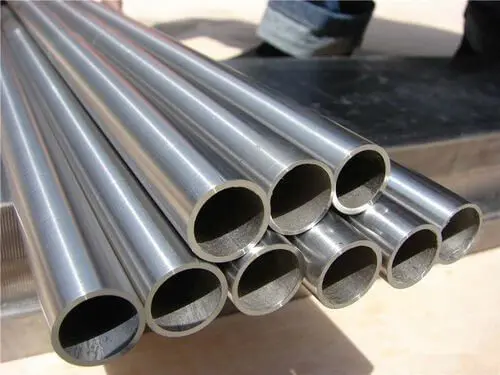
2. Concrete Pipes
Major water supply Mains are directed through a network of Concrete Pipes. They may be reinforced according to the diameter of production.
Smaller Unreinforced pipes are used for water drainage disposal and large reinforced concrete pipes are used in the main water supply network.
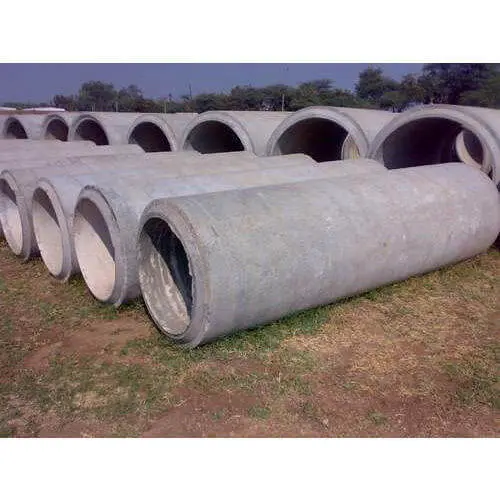
3. PVC pipes
Different types of plastic/ PVC pipes are available for both water supply and drainage networks. Unplasticized PVC pipes are used for cold water systems, plasticized PVC pipes are used in a low temperature environment. PVC pipes are somehow now designed to withstand high temperatures and strength too.
These are economical and easy to maintain options. And they are readily available.
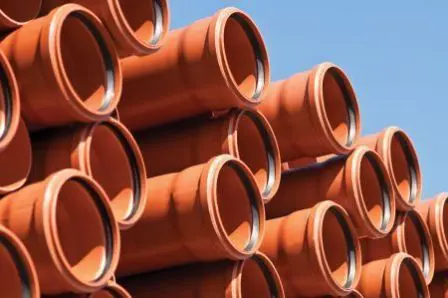
4. Asbestos Cement Pipes
These pipes are cheap as compared to all available options. But they are prone to breakage easily. Common application of asbestos pipe can be observed as Ventilation pipes, rainwater pipes, Soil drains etc.
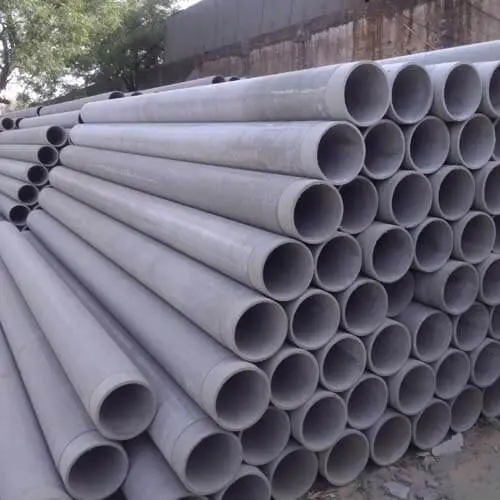
5. Stoneware Pipes
These pipes are manufacture by ceramic processes of burning soil at high temperature. These are used in underground drainage networks. Installations of stoneware pipes require a skilled set of working because of the rigidity and brittle nature.

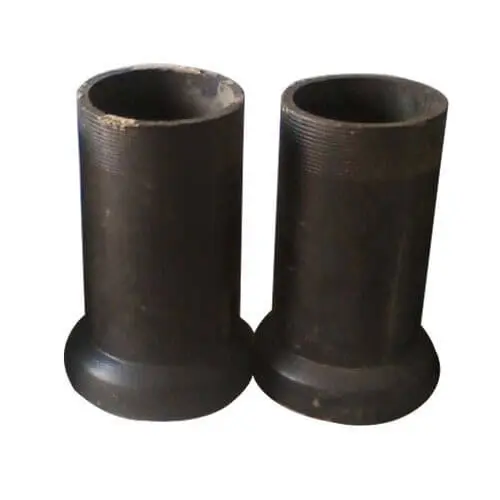
6. HDPE pipes
High-Density Polyethylene Pipes are used in demanding pressure situations. These are available in various thicknesses. They can be bent up to 90 degrees.
HDPE pipes are resistant to biological sustaining like Root emergence, thus they are recommended for pressurized Wastewater lines and sewage disposal networks. That means when sewer water needs to be pumped from one place to other for treatment, HDPE pipes are used. This is not usually recommended for House drainage work.
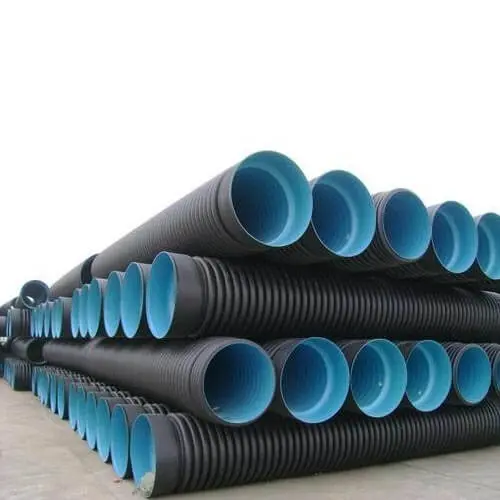
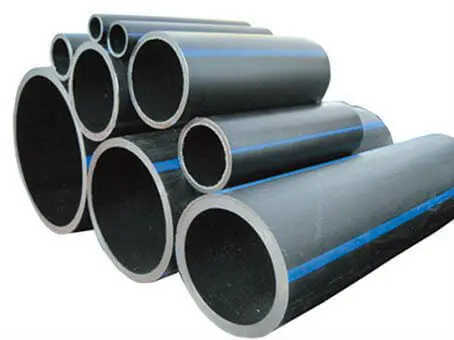
Which Type of Supply and Drinage Pipe to Use for House Construction
Supply Recommendation: Use PVC pipes for cold water supply lines. For all hot water supply line such as geyser lines, solar water heater lines etc., you need to always go for CPVC lines.
If budget is not a constraint for you, go with PEX piping. It provides flexibility of adding additional pipes to the center manifold and also replace any damaged piping with great ease.

Drainage Recommendation: Asbestos cement pipes or PVC pipes are recommended in general for drainage work for any house construction
– Anshul Kulshreshta





